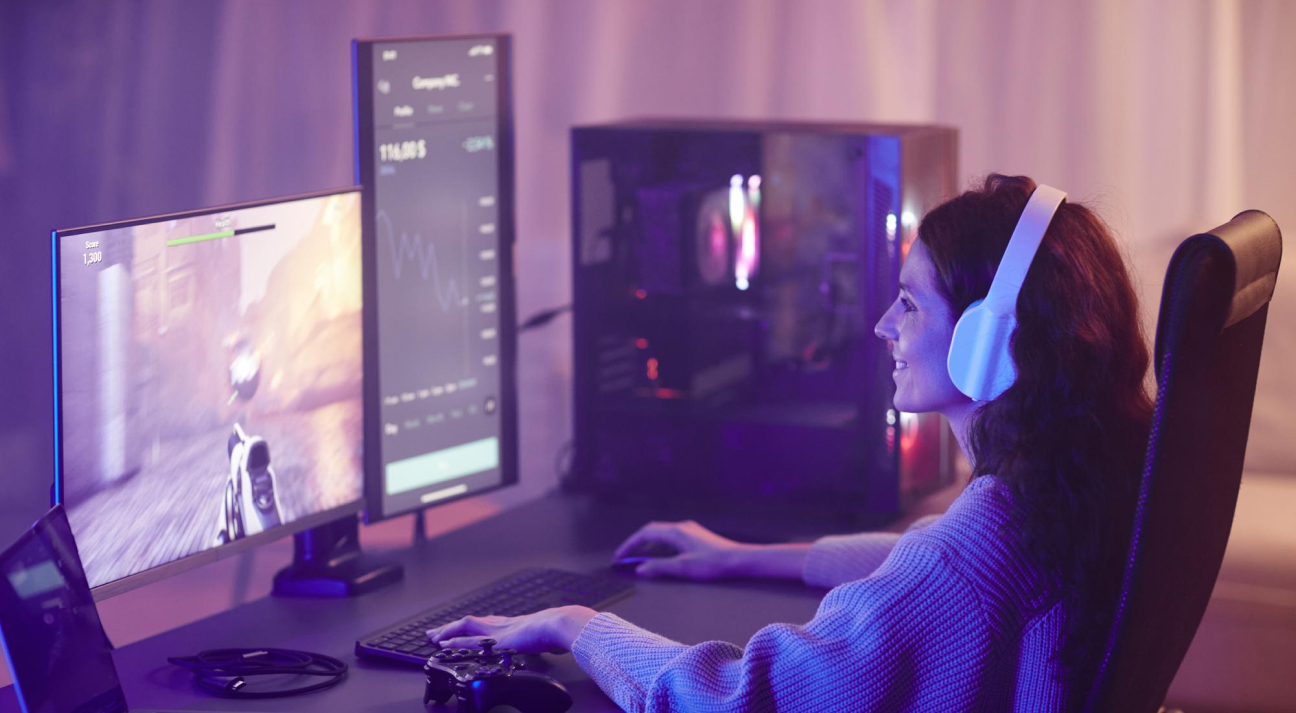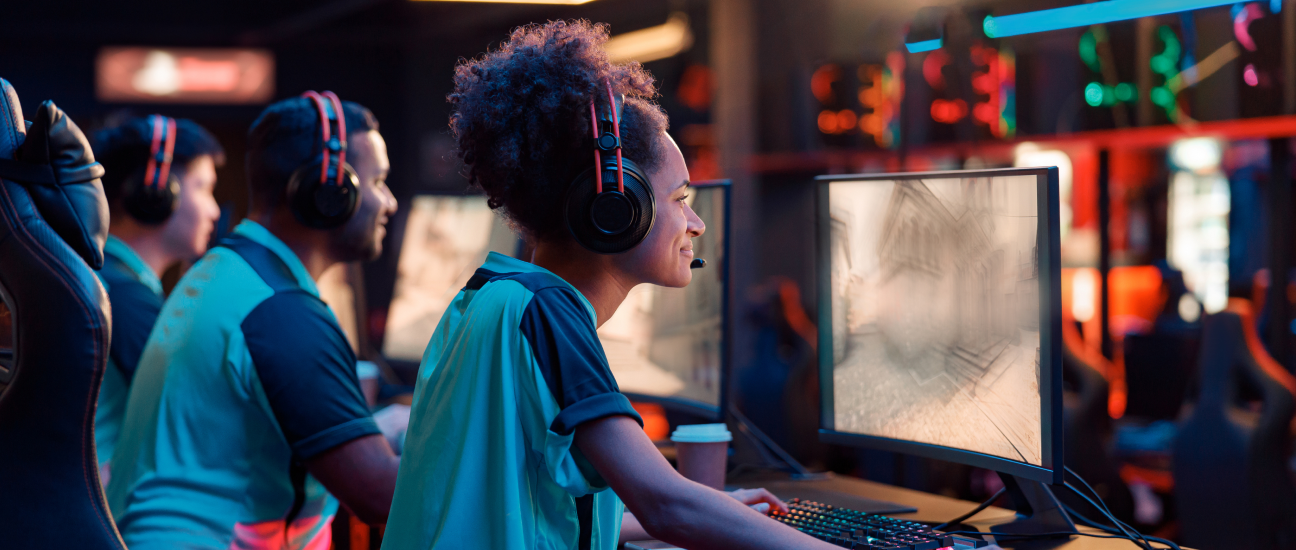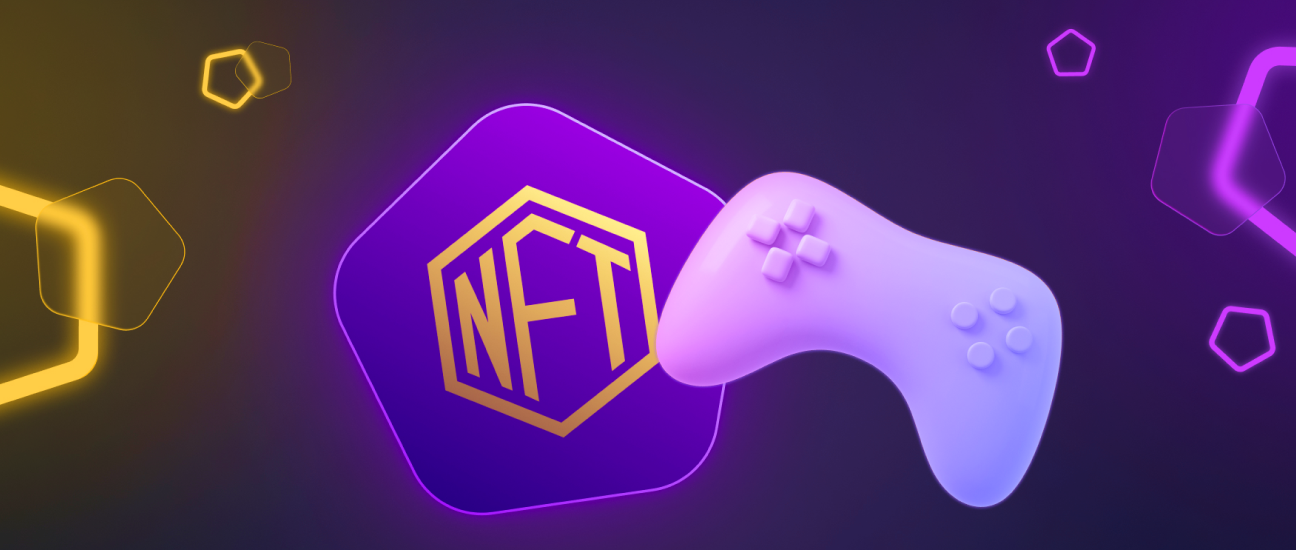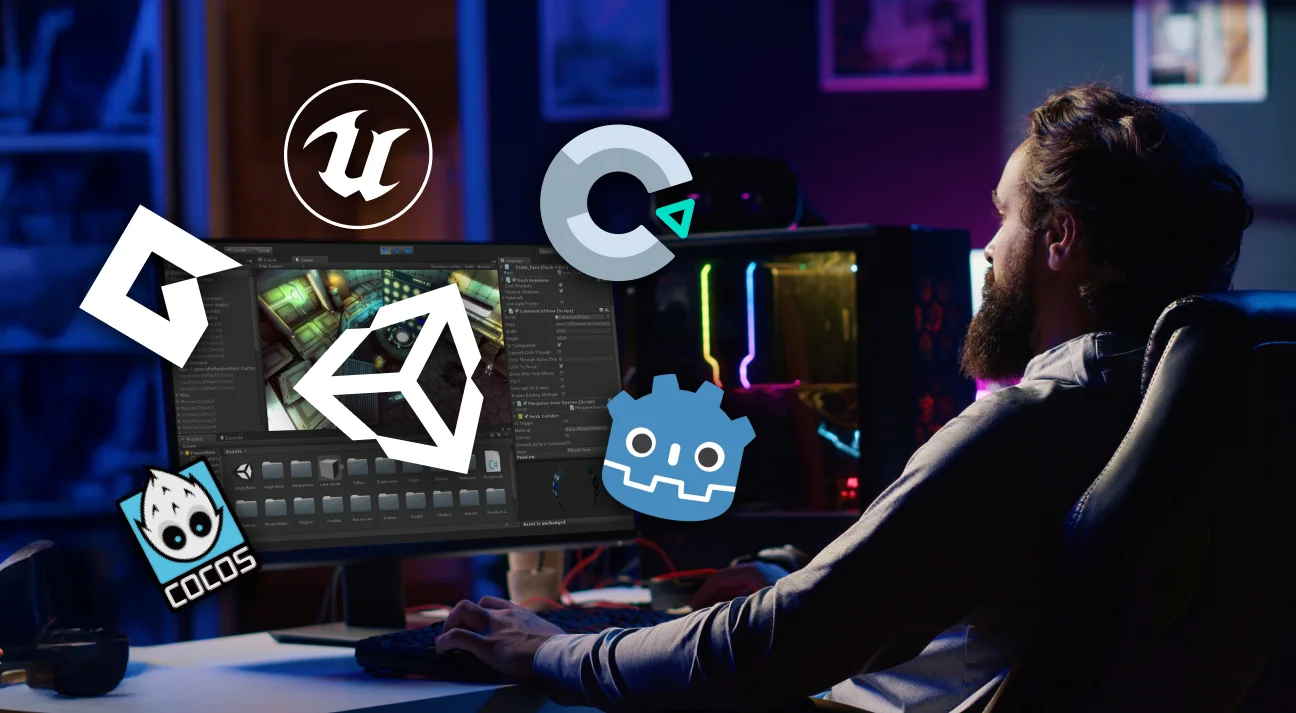
Top 10 Game Development Trends to Watch Out in 2025
For the gaming industry, staying at the forefront of innovation is not just an aspiration but a necessity. With each passing year, the gaming industry is pushing the boundaries of technology, storyline, and gameplay experience.
Gaming industry is evolving with each adaptation and bringing more and more transformation. 2025 is no different, the year also has many adaptations lined up in the way that will take the industry forward and add millions of new players.
To keep you updated with that, we have listed some of the most impeccable game development trends of 2025. Take a look at them!
How Gaming Industry is Growing Over Time
The gaming sector has become a dynamic, ever-expanding industry, providing emerging experiences and captivating billions of players worldwide. According to predictions, the growth is just the tip of the iceberg and the industry will expand more in the near future due to the continuous advancements in gaming technology. Here is a detailed analysis of this expected growth and expansion.
- The gaming industry is expected to achieve notable growth, with an estimated value of USD 245.10 billion in 2023. Following the prediction, the industry is forecasted to reach USD 376.08 billion by 2028, following a CAGR of 8.94% during the forecasted period of 2023-2028.
- The global gaming industry has experienced remarkable growth due to the implication of current trends in game development like AR & VR, Blockchain, Metaverse, cloud gaming, etc.
- Factors like increased smartphone usage, online multiplayer gaming, and trending technologies adoptions have contributed to its growth.
- For revenue generation, the gaming industry has several segments, including mobile gaming, PC game development, console games, and cloud gaming. Among these, mobile gaming has become the largest segment due to the widespread use of smartphones making mobile game development a profitable opportunity for gaming companies.
- Game developers are creating and optimizing code for various platforms, including PlayStation, Xbox, and Windows PC, and delivering it to gamers as a unified product accessible through cloud-based platforms. The move is taken to elevate the gaming experience and make it more accessible.
The growth may see more spike after the launch of 5G and upcoming trends in gaming industry, changing the future and leading to expansion.
Latest Game Development Trends In Gaming Industry
The gaming industry is evolving constantly and adapting to new gaming trends and innovations with each passing year. Here is a detailed list of video game development trends contributing to the growth and prosperity.
Metaverse Gaming

Metaverse gaming is the next big game development trends in 2025 and beyond, Metaverse in gaming refers to an interconnected, virtual, and immersive digital world where players can interact, play together, and socialize to enjoy the game. It is a fusion of online gaming and virtual reality, consisting of games, social platforms, simulations, social interaction, user experience, and virtual environments.
Metaverse engages users in a higher-level, three-dimensional environment where in-built gaming elements and user interaction give a personalized touch to users. The experience is better and more realistic than a two-dimensional environment.
The development of Metaverse is advancing due to networking, cloud computing, and AI. Companies like Meta, Google, Epic Game, The Sandbox, and Improbable are heavily investing in Meta Verse gaming, acquiring companies and development platforms to support Metaverse game development.
Through Metaverse, players can explore vast, persistent worlds where they have the privilege to create their own narratives. They can interconnect different virtual worlds, share assets, and move seamlessly between different experiences, bringing a sense of continuity and freedom. These technical yet innovative advancements are driving audiences as well as top gaming influencers towards the metaverse, adding to the game development trend.
Realistic Graphics and Ray Tracing
Realistic graphics are the visual fidelity and lifelike appearance of in-game objects, characters, and environments. Games use their high-resolution textures to give surfaces and objects a detailed and lifelike appearance. Dynamic lighting reacts to changes in the environment and character movements, enhancing realism in the graphics.
The technology also helps create physics simulations for objects, character movements, and animations, contributing to a more believable game world. Along with it, developers can also develop high-polygon 3D models and character designs and use effects like depth of field, motion blur, and color grading to enhance visual realism.
On the other hand, Ray tracing is a rendering technique used for simulating the behavior of light in the real world. It decides how light rays interact with objects, surfaces and materials in the virtual environment. It creates more realistic lighting, shadows, reflections, and refractions in real-time, resulting in a significant leap in visual fidelity.
Ray tracing enables global illumination, which accurately calculates how light bounces off surfaces and affects the overall lighting in the scene. It produces soft and realistic shadows with accurate penumbra and occlusion effects. It creates highly detailed and accurate reflections on surfaces and simulates the bending of light as it passes through transparent materials, creating glass and water effects.
Both these technologies are among the latest game development trends that may brighten the future of the gaming industry. They can elevate the visual quality of games, provide more accurate cues, and improve game designs and storytelling. These trends will push the boundaries of innovation, gameplay experience, and growth.
Cloud Gaming
Cloud technology is among the leading game development trends of 2025. Cloud allows players to play video games over the internet without demanding powerful gaming hardware or local game installations. Meanwhile, the game is hosted on remote servers in data centers, and the video and input data are transmitted back and forth between the player’s device and the cloud servers.
Cloud supports server-side processing in which the game is installed and operated on powerful servers located in data centers. These servers handle all the processing, including game logic, physics, graphics rendering, and AI. With the support of the cloud, players can use multiple devices, including smartphones, tablets, PCs, smart TVs, and gaming consoles, to access the game.
Cloud security is superior, and it stores game progress, allowing players to resume the game from where they left the game. In upcoming years, cloud technology will democratize the gaming development trend and industry using 5G network speed and power. It will lower the entry for game developers, leading to a more diverse and innovative gaming landscape. With cloud technology, indie developers and small studios would be able to create and distribute games more easily.
AR and VR Gaming

The global market for Augmented Reality and Virtual Reality in gaming has already achieved a whopping revenue of USD 1,210 Million in 2022. It is forecasted to reach the mark of USD 10,110 Million by 2029. The growth is expected to acquire a robust compound annual growth rate (CAGR) of 35.4% between 2023 to 2029.
Hence, the impact of AR and VR in gaming is solid and the future gaming trends looks exciting and filled with innovations that promise to redefine the user experience. Very soon, the technology will feature more realistic graphics, higher resolutions, and better textures, creating more immersive environments.
Enhanced haptic feedback systems will provide more realistic physical sensations, adding to the overall immersion. Wireless headsets, standalone AR glasses, and VR headsets with integrated processing power will become more prevalent.
The development of AR cloud infrastructure will enable persistent, location-based experiences that can be shared with others. VR and AR will facilitate more immersive and natural social interactions within games, allowing friends to meet up in virtual spaces or experience shared augmented reality.
Blockchain-Based Gaming
Blockchain in gaming empowers players to buy, sell, and trade digital items across multiple games. It gives them the ability to build an interconnected gaming world where they own their in-game assets. It eliminates intermediaries and allows players to set prices for their digital assets.
In the near future, Blockchain will bring smart contracts, adding a dynamic and autonomous element to gameplay. The advancement will enable games to adapt and evolve based on players’ actions, offering a personalized adventure every time they play.
Blockchain will back up the “Play-to-Earn” gaming model, where players can earn cryptocurrency or in-game assets by participating in games. Moreover, the new model ensures uptight security using decentralized networks that encrypt data and safeguard the game from hackers, keeping the assets scarce and authentic.
Along with it, game developers can also explore new monetization models, like Initial Item Offerings (IIOs), where they can sell rare in-game assets or subscriptions to fund game development. With these advancements, you can count Blockchain- the latest game development trends is shaping the gaming industry positively.
AI and ML in Gaming
In 2025, AI and ML will introduce new dimensions to game creation, playability, and enhancement. They will help generate game content, including levels, maps, and other game aspects. AI will analyze player’s behavior and preferences to create personalized gaming experiences, supporting players adapting to the difficulty level, recommending in-game content, and tailoring storylines to the player’s choices.
AI and ML in gaming will promote the development of more dynamic and realistic NPC behaviors and encourage voice and natural language interactions, streamlining game testing and debugging while providing crucial support for game design.
In addition, AI and ML will enhance graphics, security, matchmaking, storytelling, and player behavior analysis, offering game developers invaluable insights and tools for crafting immersive and engaging gaming experiences. As the gaming industry embraces these technological advances, players can look forward to a more customized, engaging, and dynamic gaming landscape. This is how the AI ML game development trend looks like.
eSports & Competitive Gaming

Esports is on a fast-paced journey of achieving popularity, success, viewership, and stability. Earlier, Esports were not that famous, and highly-watched Esports events like League of Legends also struggled to find an audience. In recent years, the gaming trend is shifting and it has shown notable growth and acquired viewers, with many events surpassing the milestone of 100 million hours watched.
Now, it will move towards the forecasted valuation of $6.75 billion by 2030. In 2025, Esports will become more professional and a strong competitor for traditional sports. The increased viewership, changing interest, 5G networks, organized leagues, standardized rules, and structured teams will back the game development growth, helping organizations and investors generate higher revenues.
Platforms like Twitch and YouTube gaming have simplified live streaming of gameplay, tournaments, and content to a global audience. Due to this reason, many colleges and schools have established Esports programs and scholarships, offering a path to legitimacy and long-term growth in the industry.
Along with it, the game also offers multiple revenue streams, like sponsorships, advertising, media rights, merchandise, and ticket sales. Hence, traditional sports teams and athletes are getting involved with Esports, creating synergies between the two industries and expanding the audience.
NFT Gaming

NFT (Non-Fungible Tokens) grants ownership of in-game assets, allowing players to buy, sell, and trade NFT-based items, characters, skins, costumes, and other collectibles. NFTs also enable the creation of rare and limited-edition in-game items, increasing their value into manifolds. These tokens are enabling gamers to earn real-world value from their in-game achievements.
They can sell their NFTs, participate in blockchain-based play-to-earn models, and generate income through NFT gaming. In upcoming years, Players can expect to see a wider range of NFT-based in-game assets, characters, and experiences in both traditional and blockchain-based games. NFT has become an upcoming game development trend that is here to stay for long.
Cross-game and cross-platform interoperability will become more prevalent, allowing players to use their NFT assets across multiple virtual worlds and games. The integration of NFTs into virtual reality (VR) and augmented reality (AR) gaming experiences will create new opportunities for immersive and interactive gameplay.
Cross-Platform Gaming
Cross-platform gaming promotes inclusivity by enabling friends to connect regardless of their preferred gaming devices or systems. In 2025, you may see this gaming trend growing in leaps and bounds because the merger of different platforms will lead to a more diverse and competitive gaming environment.
This game development trend will foster strong and skilled gaming communities and encourage players to join larger, interconnected ecosystems, creating opportunities for social interaction and engagement.
The multi-device gaming feature will allow players to start playing on one device and continue on another. This seamless transition between devices will offer flexibility and convenience for players with busy lifestyles and generate higher revenues by attracting more gamers.
Hyper Casual Gaming
Hyper-casual games are more accessible and easy to pick up and play, especially for non-gamers and casual gamers. These games are quick to play and ideal for short sessions during breaks or commutes. They have simple mechanics and straightforward gameplay that anyone can understand and enjoy, even if they are not expert players.
In the next year, you will find these games appealing to a broad audience, from children to adults. This type of game development can become the trend if the growth continues like this. They are designed with social sharing in mind, and their simplicity, competitive elements, and community play will make it a viral trend.
Moreover, they are cost-effective and easy to develop compared to complex, high-production titles. You will see more and more hyper-casual games hitting the market and capturing the audience with their simple yet elegant layout.
Advantages of Integrating Top Game Development Trends in Your Venture
Integration of trending technologies into your games offers several benefits. A few of them are as follows:
- Trending game development technologies keep the game updated with the latest industry moves and help you make a strong position in the market while outcasting the competition.
- Trendy game features and mechanics boost player engagement, leading to longer play sessions and increased player retention.
- Popular game development trends appeal to a broader audience, from casual to hardcore gamers, and expand the player base.
- These trends also help earn through various revenue streams, including in-game ads, microtransactions, virtual goods sales, etc.
- Trend-driven features, such as multiplayer cross-play and community events, strengthen player communities and enhance social interaction.
- Your venture becomes more attractive to brand partnerships and collaborations, facilitating marketing efforts and revenue generation.
- Many trends involve data analytics and player behavior analysis, allowing you to optimize game mechanics and content for enhanced player experiences.
Develop Feature-Rich Games with 300Mind
Concluding it all, in 2025, the world of gaming will undergo major transformations and introduce new adventures. The gaming industry will become more exciting and different from what we know today. So, it is the right time to connect with a game development company to invest in games.
300Mind is the perfect choice for this work. Our skilled team is proficient in various aspects of game development, including game design, programming, art, sound, and quality assurance. They keep pace with the latest technological advancements in the industry to leverage cutting-edge tools and platforms for your game.
Our artists develop visuals and user interfaces, contributing to the overall aesthetics and user experience of the game. We are renowned for delivering innovative and unique game concepts that capture players’ attention and keep them engaged.

FAQs on Game Development Trends of 2025
Gamers following game development trends are likely to be a diverse and dynamic group. The future gamer might be an elderly individual using virtual reality to relive the favorite classics, a professional esports athlete competing for global recognition, or a young child exploring educational games to learn and grow. Gamers will transcend traditional stereotypes, and the gaming community will continue to promote diversity and inclusion.
With the advancements of technologies, games will become the norm and reach each household, connecting players across the world. Technology will help create sophisticated and dynamic in-game environments, making the gaming industry more powerful and successful.
The next big things in gaming are Metaverse, Blockchain, NFT, AR, VR, Esports, Hyper Casual Gaming, AI, ML, etc. These developments will take the industry forward while offering more interconnected and player-centric gaming experiences.








